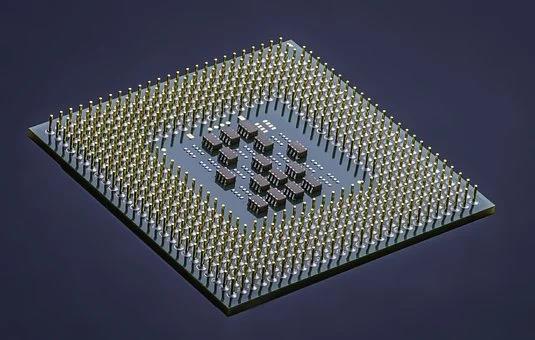
Ball Grid Array (BGA) technology has been around since the late 90s. But, it?s still relatively unpopular. Let?s explore BGA assemblies and why they?re so important to the electronics manufacturing industry.
What is BGA?
A BGA is an SMT package (Surface Mount Technology) that?s widely used in various types of electric devices, especially those containing Integrated Circuits (ICs). BGA technology is used to attach SMT pieces to PCBs. BGAs help forms solid bonds between ICs and PCBs. Underneath ICs, there are several pads containing small solder balls. These balls are melted into position via reflow soldering.
BGA assembly is a high-density and cost-effective packaging method. Using this technology, electronics manufacturers can create high-functioning circuit boards as they can position individual components very precisely.
Soldering professionals who excel at assembling BGAs can conduct vital repairs such as fixing motherboards of PCs and mobile phones using high-quality equipment and circuit boards. Compared to other ways of creating integrated circuit SMD packages like Pin-Grid Array (PGA) or Quad Flat Package (QFP), BGA technology is highly advantageous to equipment manufacturers for various reasons such as –
- BGA packages are highly compatible with high-efficiency system equipment.
- Ball Grid Arrays offer better ?solderability.? Hence, fast assembly processes while maintaining quality levels are possible when manufacturers use BGAs.
- BGAs allow manufacturers to use the spaces underneath Integrated Circuit boards efficiently. Hence, the thermal and electrical performances of devices also improve.
- With BGA technology, super-slim assembly boards can be used with ease. Hence, equipment manufacturers can address the demand for sleeker electronic products like super-slim laptops, smartphones, and tablets.
- BGA leads are created using solid and robust solder balls that ensure board damages during standard operations are minimal. BGAs also require much less maintenance and repair on average. For instance, the assembly defect rate of BGAs compared to QFPs is significantly lower.
- Since an array of robust solder balls are used for electrical interconnections, the overall packaging is extremely stable. There are no risks like pins getting bent or cracked (these risks are common in other SMT packaging methods).
- BGAs have the best thermal dissipation capabilities, making them ideal for manufacturing miniature packages for small integrated circuits.
BGA Reballing ? Why This Skill is So Vital in the Electronics Assembly Industry
BGAs are used in countless modern-day electronics products, especially the ones that are lightweight and compact. Although BGAs are very robust and not prone to constant repairs, they do need to be reworked and ?reballed? from time to time. Experts who?buy BGA tools that are incredibly advanced can repair, reball, or rework even extremely badly damaged BGAs. BGA reballing is the process of manually replacing every old or defective soldered ball on a BGA with new ones.
Chip packages (ICs, PCBs, and BGAs) need to have functioning solder balls to be read by electric devices. BGA reballing allows manufacturers to restore damaged or defective solder balls. Unlike replacing the BGAs or getting rid of the malfunctioning chip packages, BGA reballing allows manufacturers and users to repair their devices in a cost-effective manner. The process of BGA reballing, i.e., the restoration of the solder balls on the bottom sides of chip packages, is carried out using BGA stencils.
Using BGA Stencils
BGA stencils are vital for making BGA reballing processes smoother and more time-efficient. These metal plates come with numerous small holes. The sizes of these holes correspond directly with the diameters of the BGA solder balls. The sizes of spaces between the holes also correspond to the spaces between the chips? pin surfaces. Hence, the process of replacing old solder balls with new ones in a consistent manner is very easy.
All leading BGA stencil manufacturers follow the Association Connecting Electronics Industries? (IPC) guidelines regarding stencil design. The IPC 7525 is a document dedicated to stencil design-related specifications that all BGA stencil manufacturers must follow.
Types of BGA Stencils
BGA stencils are broadly divided into two types ?
- Universal Stencils: These square matrices with equally-sized holes are the most popularly used stencil type. As long as the chips (that are being reballed) have the same diameter and pitch as the universal stencil, the reballing process will be super-efficient and easy.
- Specialized Stencils: The hole alignments on these square matrices are specially designed for specific chips. They match the arrangement of the pins on the chip that?s being reballed. For instance, if a chip needs to be reballed every six months, the manufacturer will create a specialized stencil just for that purpose.
Most reballing kits in the market come with universal stencils.
The Importance of Using BGA Tools
BGA tools like squeegees and BGA stencils are vital for reballing processes. They?re designed as per IPC standards and help operators save a lot of time. Unlike BGA reworking, BGA reballing is a low-cost and time-efficient repair method proven to provide precise results. Electronic assemblers or soldering professionals need to buy, use, and master BGA tools to improve their general skillsets and their chances of landing more advanced jobs.










